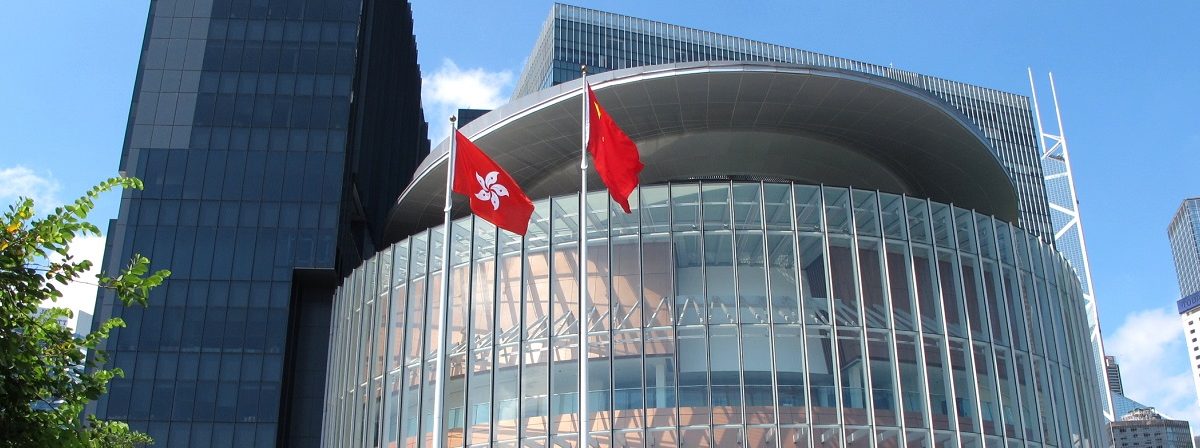Henry K C HO: How Can Hong Kong Free Itself from the Dilemma of ‘The More Consultation, The Less Consensus’?

Henry K C HO: Home Purchases Should Be Allowed in The Greater Bay Area

Yiqiao WANG: “Revolving Door”: Does It Work for Hong Kong?

To consider the decision to build the new Palace Museum in Hong Kong’s West Kowloon Cultural District (WKCD) as just another ‘gift’ from the central government would be rather superficial. In terms of Hong Kong’s tourism development, it is undoubtedly the most important new attraction since the establishment of Disneyland in 2005, and it will provide a powerful impetus to attract visitors from all over the world. It was self-evident that the move would enhance the international status of the WKCD and boost passenger flow on the Guangzhou-Shenzhen-Hong Kong high-speed railway. For a long time, there has been a saying regarding the Forbidden City: ‘Architecture in Beijing and antiques in Taipei’. We look forward to the Palace Museum in West Kowloon adopting the most advanced designs and technology of the 2020s.
Sadly, but not surprisingly, Hong Kong’s legislators and the media are debating why the decision has not been open to public consultation. In Hong Kong, public consultation is considered necessary for any decision-making process. It has even been elevated to so-called ‘procedural justice’, and any scheme can be overturned or withdrawn after the consultation as long as public opinion is ‘strong enough’. That the WKCD itself has been the subject of controversy for more than ten years is indeed the best example of this.
The Model for the Council for Sustainable Development
Since Mr. Donald Tsang Yam-kuen, the former Chief Executive, proposed the concept of ‘public engagement’ in 2007 to replace the more one-way and top-down ‘public consultation’, the government has spent more time and energy gathering public opinion and explaining policies than ever before. How can Hong Kong free itself from the dilemma of ‘the more consultation, the less consensus’? Are there any possibilities other than ‘continuous consultation and deliberation without decision’ and ‘no consultation’? The author participated in the Council for Sustainable Development from 2009–2012, including working in its public engagement process on Sustainable Built Environment. The focus of the consultation was the Gross Floor Area (GFA) concessions policy.[1]It was commissioned by Carrie Lam, then director of the Development Bureau, to the Council (the chairman then was Bernard Chan) in 2009–10. This experience will serve as a useful reference for the next government.
The mode of consultation for the Council on Sustainable Development is different from traditional practices, including the subject-object relationship as well as the entire process of the consultation. In the traditional mode, government departments or statutory bodies act as subjects that consult relevant stakeholders (as objects of consultation) on relevant plans, projects, policies, and measures. After collecting and analysing opinion during the consultation period, government departments make a final decision on the subject.
The consultation model of the Council for Sustainable Development is quite different.
First, instead of being the ‘subject of consultation’, the government steps back to become the ‘principal’, and the Council is appointed to be the subject in charge of the consultation. Members of the Council include people with expertise in business, social welfare, and the environmental sectors. Although the committee is under the purview of the Environment Bureau, it can be commissioned by other policy bureaux to conduct consultations on issues related to sustainable development. Once the Council has identified the issues to be dealt with, a series of preliminary preparations relating to the consultation will be carried out through its strategy sub-committee and a support group composed of experts.
After all preparations for the consultation are in place, the committee will invite partner organisations to participate. Taking the ‘Sustainable Built Environment’ consultation as an example, there were 30 partner organisations from different backgrounds such as professional groups, universities, secondary schools, statutory bodies, and non-governmental organizations. Each organization can receive a maximum of $20,000 in funding to seek opinions from its members and stakeholders. The Council’s ‘Independent Reporting Agency’ attends all activities of the partner organisations to collect and record views.
Stakeholders to Trust and Be Respected
There are several advantages to this consultation model. First, the Council consists of experts from different sectors focusing on independence, inclusiveness, and openness in the consultation process without holding any pre-set positions, so that the trust of the stakeholders is more likely to be gained. Also, the Council’s detailed presentation of the views and recommendations gathered in the form of a public report would make participating stakeholders feel that their views were respected. Second, many of the former ‘objects of the consultation’ assist in taking advice from members of their organizations by becoming partners and ‘subjects of the consultation’ at the same time, increasing their sense of ownership of the consultation. In addition, the different stages of the consultation process, including drafting consultation papers and conducting public consultations by collecting opinions, analyses, and recommendations, are conducted by different consulting firms and academic institutions employed by the Council. These organisations are generally more trusted by stakeholders than are government officials.
The Council usually spends more than a year in conducting a consultation exercise to allow sufficient time for all stakeholders to participate and express their opinions, and therefore the outcome of the consultation is more reliable and robust. In the case of the much criticized ‘inflated buildings’, the unlimited GFA concessions resulted in an excessive density of urban development and an increase in the height of buildings from an average of 41 stories to 49 stories.Restrictions on the ‘inflated component’ will affect profits of property developers and indirectly affect the revenue in government coffers. This issue implies the contradicting interests of many different stakeholders. After consultation, the Development Bureau finally agreed to a relatively moderate proposal of ‘a 10% cap on the granting of GFA concessions’, which was generally accepted by the public, green groups, and developers.
From “Engage Stakeholders” to “Stakeholders Engage”
The wisdom of this consulting model is the transformation of ‘engage stakeholders’ into ‘stakeholders engage’, which increases the sense of ownership and identity of the participants. The government has reduced the allegations of ‘no consultation’ or ‘false consultation’ and made it easier to seek acceptable solutions throughout the consultation process.
Admittedly, the political environment in Hong Kong is much tougher than it was in 2010. More Legislative Council members and social movement activists are ready to bring down government projects and policies without considering the consequences. More people use alarmist rhetoric to block bills that benefit the public in order to protect the interests of a particular industry: the failure of the Medical Registration (Amendment) Ordinance of the Medical Council of Hong Kong is the most prominent example. While the government may choose to bypass the Legislative Council and public consultation in the future, the questions of how to optimize the depth, breadth, and timeliness of consultations and how to consult widely in an increasingly divided society to understand the public’s positions at the time of the implementation of the project are still very important. The experience of the Council for Sustainable Development model discussed in this article may serve as a useful reference for the next government.
From Henry Ho & Gordon Lam (ed.) A Debate of Two Systems, p.42
Original from:Forum page, Ming Pao. (January 5, 2017)
[1] In order to encourage developers to improve building environments, the government would exempt some features such as balconies, covered walkways, and roof gardens as part of the approved Gross Floor Area. As a result, more flats are allowed to be built, and buildings are taller with higher density than they are normally allowed. This phenomenon is known as ‘inflated buildings’.




